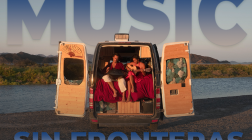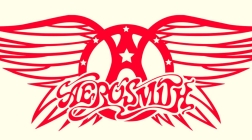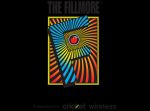A classical music holiday concert: not a bad way to spend an afternoon (margarita included)

I went to a classical concert last night. I know, I know…I have said often in this space and elsewhere that I don’t do classical because you can’t dance to it unless you are a ballerina which I definitely am not.
I went for a couple of reasons. First, it’s the holiday season and there are multitudinous musical performances here in Lakeside, Mexico, and I love holiday music concerts and this was one of them. But the most important reason is that I knew the Music Director and three people in the orchestra – a couple of whom are very good friends — and friends support friends, especially in music.
One of my friends played the flute in the orchestra last night, but she also plays saxophone in a big band doing blues and swing; another one of the classical artists I knew last night also plays the sax in an award-winning blues-rock band. My very good friend Steve played the euphonium – related to a tuba, but tuned at a slightly higher range of notes and does not have the huge mouth – but can also rock a blues tune on the piano.
Plus, the concert featured a soprano, Mariana Vigueras, who I have seen with big bands doing swing and blues and pop. This was my first time hearing her insanely powerful classical voice.
Well, how was it,” you ask? Did this long-time rock critic who has spent his entire life avoiding classical music survive an afternoon of songs by composers like Handel, Corelli, Puccini?
Ok, thank you. Actually, it was not a bad way to spend an afternoon.
After a week of frantic Christmas stuff rushing around, editing for the local newspaper, and dealing with home repairs, the opportunity to just sit and listen – not even shooting video or photos – was really welcome (a strong margarita beforehand helped, this is Mexico, after all). It also reminded me of the importance of acoustics in musical performance.
When I cover rock or blues or jazz or rap in a club, there is a sound engineer who works with an established system and acoustic environment she or he knows well, so the mics, amps, and soundboard can be tuned for each band. The same goes for festival stages, also the challenges are different.
Last night the Lake Chapala Community Orchestra played in a local church that had previously been a glove factory. High ceilings with steel beams, limited little echo suppression on the walls, a portable speaker system, and an audience limited in size by covid rules meant that the sound was less than perfect. Some instruments were clear, others were mushy; Vigueras’s vocals were sanded down and a bit piercing so we did not get the full range even through the speaker towers. The acoustical unevenness prevented all of the sounds and her voice from blending well. And sound engineer adjustments were not possible.
While this did not make for an ideal musical experience, it did make me think about the acoustics in the clubs and stages I cover for rock, something I take for granted. Now I have a basis of comparison and I will pay more attention to the acoustics and the skill of the sound engineer and board operator.
The concert also made me appreciate what it takes to produce classical music. I know it sounds strange that a person who writes about music had never attended a performance of the longest-running musical tradition in the western world ( I have been to an opera — boring!). But I was raised on rock and roll. My heart beats to 4/4 time and has over the past few years expanded to Latin beats like 6/8 and the flamenco 3/4. As far as I can tell, classical does not have a beat; it has tempos and occasional rhythm, but no beat. Like I said you can’t dance to it.
But it is very complex, and the skill of Music Director Michael Reason to craft a program combining the composers like Handel and songwriters like Leonard Cohen and Jose Feliciano and get 30 or so artists to all work together is impressive, at least to a neophyte like me. Compared to that, keeping a 5-piece pop band together seems like child’s play.
The complexity of the music itself also both intimidated and inspired me. I love fusion music that produces songs with multiple beats, styles, breakdowns, and changes. This is where pop and rock are going musically: more complexity, more sophistication. A case in point is a song like Nancy Sanchez’s “Gran Civilización” which blends her chorus and lyrics with a rap backbone by Olmeca, moving through multiple landscapes but presenting a unified image. Listening to some of the compositions last night gave me the same feeling; they moved and changed and presented an undulating musical landscape.
One concert is not going to make me a classical music fan, but I may honor my artist friends who play in orchestras and crossover into rock and blues by spending an afternoon or an evening marveling at the complexity of what they can do. The state and local governments have promised us that the remodeling of our 800-seat acoustically tuned auditorium will be ready this spring, which is where the LCCO will be playing, so I can listen without analyzing the acoustics. But I still won’t be able to dance to the music.



























